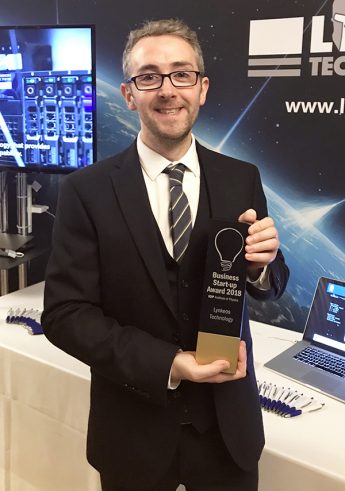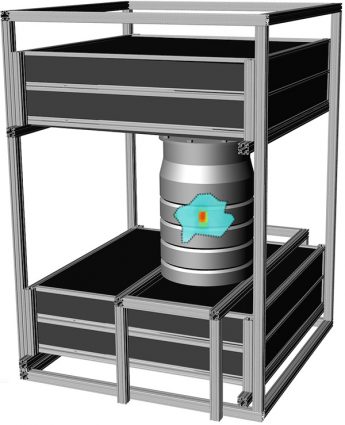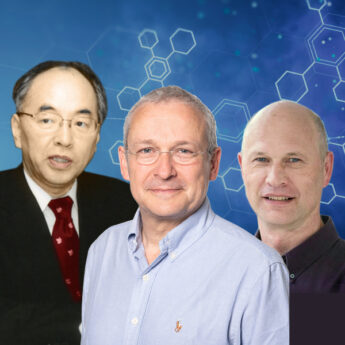At more than 4,500 years, the Great Pyramid of Giza is the oldest of the Seven Wonders of the Ancient World. But despite years of study, mysteries about its origin and purpose continue to deepen.
In 2017, a team of Japanese and French scientists announced they had studied the structure for two years and discovered that it contains a cavity some 30m long. To make this discovery, they used a powerful new technique called muography that promises to open new areas of collaboration between the UK and Japan for scientific research and commercial applications.
Pyramid peeking
The discovery of two voids has been controversial, and some experts question their significance. With no way to access the cavities, it’s impossible to say what they may contain or why they were incorporated into the monument to Pharaoh Khufu, who reigned from 2589 to 2566 BC as the second pharaoh of the Fourth Dynasty of ancient Egypt. One theory is that they were designed to relieve weight from the roof of the Great Gallery, the passage that ascends to the King’s Chamber.
Those secrets may be revealed by muography, a technique that makes use of particles called muons, the heavier cousins of electrons. Muons are created when cosmic rays flying through space collide with air molecules in Earth’s atmosphere. Every square centimetre of our planet is showered with muons at all times. But as they move at near the speed of light and interact weakly with matter, we do not notice them. Compared with imaging techniques such as X-rays, muons are freely available and can be found just about anywhere.

Hiroyuki Tanaka
“High-energy muons can penetrate as far as 2km within solid rock and, therefore, similar in practice to X-ray machines, can be used as an imaging technique to see within gigantic objects such as volcanoes, pyramids and nuclear reactors,” Hiroyuki Tanaka, a professor and director at The University of Tokyo’s International Muography Research Organization (MUOGRAPHIX), told ACUMEN. “Along with being capable of imaging potential minerals or energy resources underground, muography is also a non-destructive technique”.
Tanaka has been studying muography for decades and is a pioneer in the field. He has collaborated with other researchers—including those from the UK—to study a range of uses for muography. These include scanning underground water tables as well as seismic fault zones and volcanoes—an important application for a seismically active country such as Japan, which is home to the still-active Mount Asama.

Commercial value
Aside from shedding light on geological features, muography also has industrial applications. In 2016, Japanese researchers installed a muon detector—about the size of a washing machine—in the Unit 2 reactor of the crippled Fukushima Daiichi Nuclear Power Plant. The researchers were able to get a virtual peek inside the highly radioactive pressure vessel and deduce the presence of nuclear fuel debris.
“Social infrastructure—including silos for nuclear waste, bridges, highways, underground pipe systems—constructed in the 1950s is getting old and needs to be maintained, but there was no practical method to evaluate the degree of ageing,” explained Tanaka. “Muography can offer a completely new visualisation technique for non-destructive evaluation and testing of these structures. Muography will, in particular, contribute to industry, innovation and infrastructure for global safety, part of the United Nations Sustainable Development Goals (SDGs)”.
 Scottish connection
Scottish connection
Since the SDGs were established in 2015, research into muography has led to the development of possible commercial applications. These include scanning the following:
- Containers for smuggled nuclear materials
- Underground areas for mining exploration
- Interiors of blast furnaces for problem areas
- Civil engineering targets such as wind turbines, bridges and oil rigs
There are just a handful of muography firms in the world, and only a few are at the stage of providing services.
One innovator winning awards and making a name for itself is Lynkeos Technology Limited, a Scottish firm spun off from the University of Glasgow’s nuclear physics group. It’s funded by the UK Nuclear Decommissioning Authority through Sellafield Ltd, which is overseeing the decommissioning of the Sellafield nuclear fuel reprocessing site.
In conjunction with the university, Lynkeos has developed the Muon Imaging System to better detect and manage radioactive waste. Because muons scatter when they hit uranium, the system can be used to determine whether ageing nuclear waste containers remain intact. It’s a relatively inexpensive way to test nuclear waste materials and provides an option where no other technologies exist.
“When we spun out Lynkeos, we were very quickly successful with Innovate UK funding to commercialise our Muon Imaging System, which has now been deployed at Sellafield,” said David Mahon, a researcher at the University of Glasgow and a director at Lynkeos. “This has been used for imaging trials on waste samples for the nuclear industry”.
Mahon believes that muography will benefit industries such as mining and security, as well as carbon capture and storage. Meanwhile, the field will benefit from increasing scientific collaboration between Japan and the UK—muography scientists attended conferences in both countries last year.
“There’s a lot of scope for muography to help industry and the environment,” said Mahon. “The vision for our technology is to increase safety within the industry, to reduce costs and to accelerate long programmes of work. As well as the industry and the environment, it will also have a big impact on the taxpayer”.
Cosmic-ray muography is being applied to various areas of business

Third-generation muography observation system (MMOS)
Smart building tech
Infrastructure
Blast furnaces and industrial operations
Wind energy (turbine bases)
Nuclear reactors, waste and safeguards
Offshore decommissioning
Cargo scanning
Submarine decommissioning
Carbon storage monitoring
Tunnels and pipes
Caves and underground structures
Mineral exploration and prospecting
Volcano and glacier research
Pyramid and historic buildings








